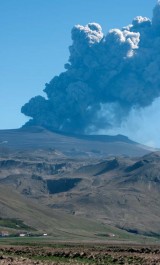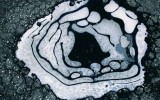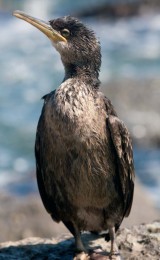This just in – current affairs can be a rich source of inspiration for experiments to challenge your budding scientists...
Primary upd8 (primaryupd8.org.uk) is a series of engaging science activities for 5–11- year-olds, each based on a current event or an everyday life context to help you make your science lessons more enjoyable. They deliver APP and scientific enquiry skills, with clear links to QCA units, and support your literacy and numeracy work as well as providing suggestions for cross-curricular and extension work.
To date there are 122 activities available in IWB-compatible pdf and editable PowerPoint formats, and a new resource is published every couple of weeks during term time. A year’s subscription for your school costs £120 for non-ASE members or £30 for ASE members, and the examples that follow demonstrate the sort of hands-on learning you’ll be able to access. Additional free sample activities are downloadable from the Primary upd8 website.
 Earlier in the year, the Eyjafjallajökull volcano, under a glacier in Iceland, erupted. British airspace was closed for six days in April and again in early May, and it could continue to affect air travel for up to two more years on and off. Many flights were cancelled as the ash cloud, 20,000–35,000ft high in the atmosphere, threatened the safety of airliners due to visibility and ash blocking their engines. (Nb. Eyjafjallajökull is pronounced AY-uhfyat- luh-YOE-kuutl (-uh) , that is -ay as in day, -fy as in few, -oe as in French coeur, -uu as in boot, the -tl as in atlas. The (-uh) is ‘a’ as in ago).
Earlier in the year, the Eyjafjallajökull volcano, under a glacier in Iceland, erupted. British airspace was closed for six days in April and again in early May, and it could continue to affect air travel for up to two more years on and off. Many flights were cancelled as the ash cloud, 20,000–35,000ft high in the atmosphere, threatened the safety of airliners due to visibility and ash blocking their engines. (Nb. Eyjafjallajökull is pronounced AY-uhfyat- luh-YOE-kuutl (-uh) , that is -ay as in day, -fy as in few, -oe as in French coeur, -uu as in boot, the -tl as in atlas. The (-uh) is ‘a’ as in ago).
Activity
In this KS2 activity, children will investigate methods of separating mixtures of solids and learn about the problems of ash clouds for aviation. The children represent ‘air’ as amixture of flour, rice and sugar in a bowl. With the children not looking (heads down!), the teacher comes round and hides the ‘ash’ particles (which could be Hermestas, or Smarties) in each bowl. The task for the children is to separate the ash particles from the air, obeying the following three rules:
• No touching with hands – particles might be sharp!
• ‘Air’ must be contained at all times in a bowl or some other container.
• You must write a story map of what your group does.
It’s a good idea to get the children to talk about what they’re going to do before they start. Provide them with a variety of kitchen equipment – sieves, scales, bowls, spoons, forks, etc. You could add in some ‘trick’ tools such as magnets. Newspaper on tables may be a good idea to catch any mess.
All of the Primary upd8 activities tie in well with the APP Science Assessment Criteria. This activity matches ‘AF3 – Communicating and collaborating in science’ and ‘AF4 – Using investigative approaches’.
 Last winter’s snow and ice caused many potholes to form on the country’s roads, forcing councils to spend more time and money on fixing them. Potholes are formed by water penetrating the asphalt surface of a road through cracks caused by traffic. When temperatures plunge, the water freezes, expands and causes the surface to rupture. When the ice melts, it leaves a void below the surface, which caves in under the stress of vehicles and eventually forms a pothole.
Last winter’s snow and ice caused many potholes to form on the country’s roads, forcing councils to spend more time and money on fixing them. Potholes are formed by water penetrating the asphalt surface of a road through cracks caused by traffic. When temperatures plunge, the water freezes, expands and causes the surface to rupture. When the ice melts, it leaves a void below the surface, which caves in under the stress of vehicles and eventually forms a pothole.
Activity
In this KS2 activity children will investigate the permeability of a selection of rocks, by weighing the rocks before and after they’ve been placed in a bowl of water. The teacher will need a selection of rocks. These can be bought from educational suppliers. The children need to weigh a rock and record its weight dry. They then need to soak the rock in water for 24 hours before weighing the rock again. The change in weight will show the children which rock was the most permeable.
Testing the children’s understanding of how potholes form and challenging them to explain the process in their own words can provide evidence for ‘AF1 – Thinking scientifically’. The permeability activity covers ‘AF4 – Using investigative approaches’. Y3 teachers are probably introducing the idea of fair testing, but it may not be appropriate here as the rocks are unlikely to be the same size. While this test is not accurate, it will give the children practice with measurement. Teachers might like to discuss the idea of accurate and inaccurate measurements with their more able pupils. Asking the children to fill in a results table provides a good opportunity to assess ‘AF5 – Working critically with evidence’.
 Crude oil flowed from a leaking Gulf of Mexico pipe after the offshore drilling rig Deepwater Horizon, leased by BP, exploded off the coast of Louisiana on 20 April 2010. It sank two days later. Heavy rust-coloured oil subsequently washed ashore, threatening wildlife, and the spill reached Louisiana and threatened Florida and Cuba before the leak was eventually plugged.
Crude oil flowed from a leaking Gulf of Mexico pipe after the offshore drilling rig Deepwater Horizon, leased by BP, exploded off the coast of Louisiana on 20 April 2010. It sank two days later. Heavy rust-coloured oil subsequently washed ashore, threatening wildlife, and the spill reached Louisiana and threatened Florida and Cuba before the leak was eventually plugged.
Activity
In this KS2 activity children will investigate the properties of water and oil, and will try to find a way to separate the two liquids. Ask the children to suggest ideas for separating the water from the oil.Show that some of these suggestions could be turned into a practical activity:
• Disperse it using detergent etc.
• Make it sink using sand
• Collect it/mop it up using some kitchen towel
• Siphoning the water off
• Put oil and water in a transparent container inside a large tray. Gently add water to the oil and water until oil overflows off the top.
• In the US an appeal was launched for human hair, which is apparently highly effective at soaking up oil. If you have access to a friendly hairdresser, this could be tested too!
• Simply spooning it out!
Ideas should be rejected if potentially dangerous, undoable in the class or prohibitively expensive, but if you think it clearly won’t work it might be worth trying in front of the children anyway to see why not. If you carry out this activity in a truly ‘freewheeling’ way, you will find that it covers all of the APP criteria – from AF1 to AF5.
 The largest subject association in the UK, the Association for Science Education (ASE) supports science teachers, technicians, advisers and teacher trainers, and provides a UKwide network to allow individuals and organisations to share ideas, tackle challenges in science teaching, develop resources and foster high-quality CPD.
The largest subject association in the UK, the Association for Science Education (ASE) supports science teachers, technicians, advisers and teacher trainers, and provides a UKwide network to allow individuals and organisations to share ideas, tackle challenges in science teaching, develop resources and foster high-quality CPD.
Playing a leading role in developing science education policy, and the lead partner of Getting Practical, a national campaign to encourage more practical work in schools, the ASE also produces innovative resources for schools such as Primary upd8. The association is also working to improve the professional standing of all teachers through the new CSciTeach professional qualification, and Primary Schools that have improved their science provision can apply for the ASE’s Primary Science Quality Mark.
Join the ASE and turn your enthusiasm into inspirational teaching. Call 0170 728 3000 or visit ase.org.uk to sign up today.
How children react to a moral dilemma may be down to your teaching
Ace-Classroom-Support
Should you let educational researchers into your classroom?
Ace-Classroom-Support
Make World Book Day Extra Special This Year
Ace-English
